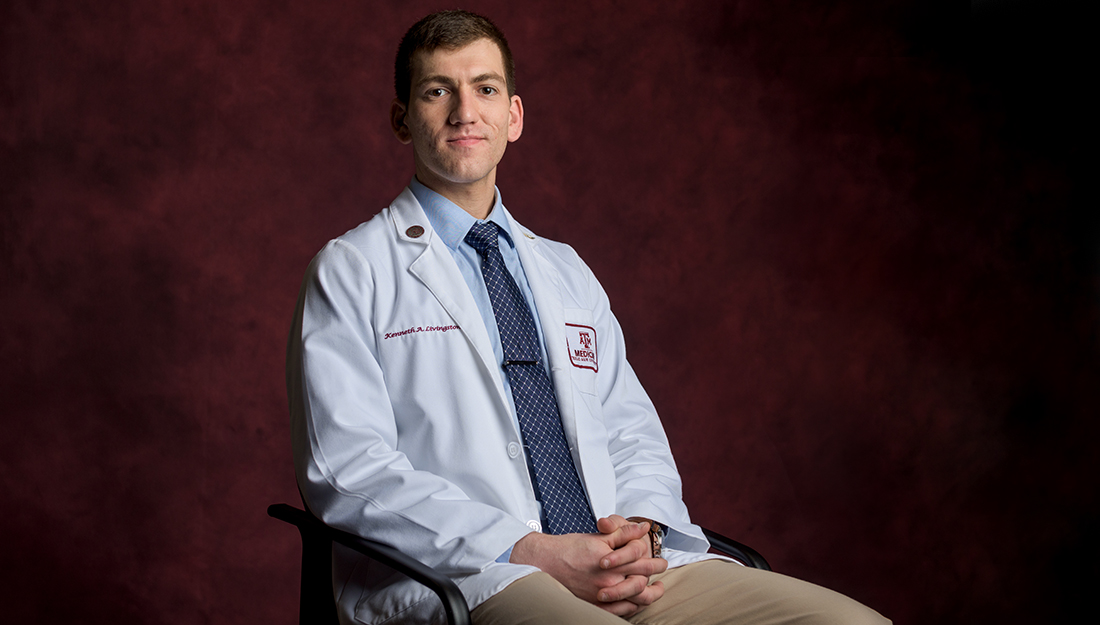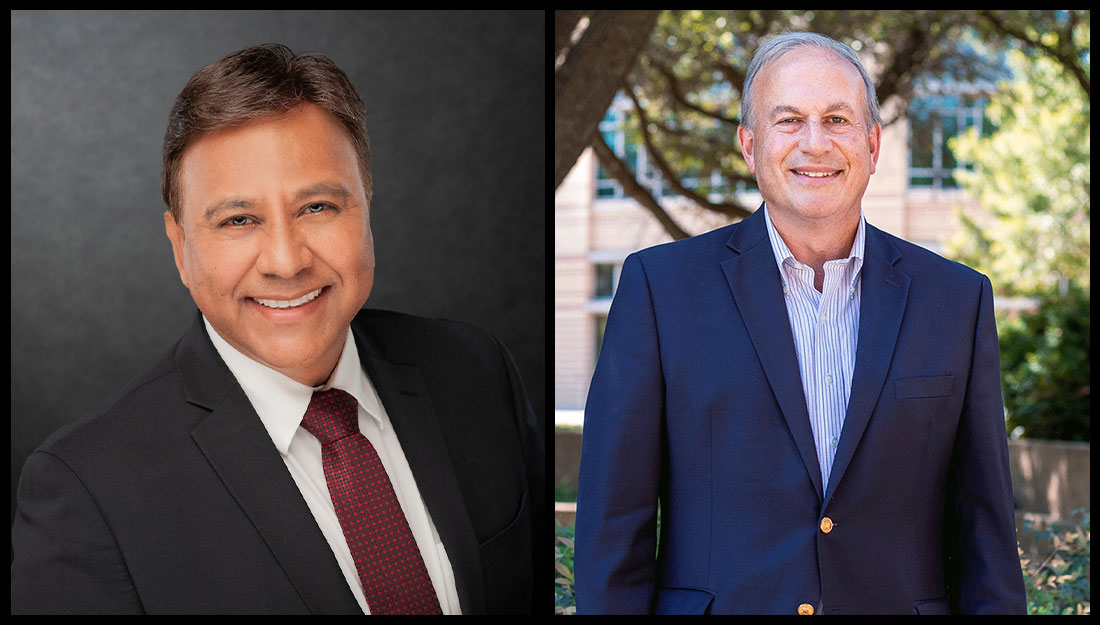Get to know: Kenneth Livingston

Meet Kenneth Livingston, an EnMed pilot student at Texas A&M University College of Medicine. EnMed is a partnership between Texas A&M College of Engineering, College of Medicine and Houston Methodist Hospital to educate a new form of doctor—a physician engineer. Vital Record spoke to Livingston about his experience as a pilot student, his thoughts on the engineering-based medical degree program and his aspirations.
Q: What made you choose the EnMed program?
A: My decision to pursue medicine developed gradually. Initially interested in electrical engineering, I spent my early years in college grappling with challenging math and science courses. While I enjoyed engineering, I sensed that I should dedicate my career to something with more direct human interaction – a place where I could see a person’s life improved immediately. I consulted my parents, and, at their suggestion, began exploring alternative career options.
Although both of my parents are physicians, it was through a colleague of theirs, Dr. Sergio Huerta, that I received an intensive exposure to the practice of medicine at the Dallas Veterans Affairs Medical Center. Dr. Huerta let me follow him on rounds and in the operating room.
I was amazed by the hospital’s bustling hallways and the professionalism of the medical personnel. Never before had I seen as direct a method of helping another person as when I witnessed a coronary artery bypass graft. I saw a group of physicians approach a system—the body in this case—and improve it using tools available to them. Those physicians, like engineers, were solving problems, with the added benefit of working directly with patients. I thought that the combination of problem solving with the ability to impact others was unique, and I further explored a career in medicine by regularly visiting the center.
Q: Why did you choose a career in medicine?
A: Of the 125 hours I invested shadowing physicians, the most memorable event occurred at the Veterans Affairs hospital, where, in surgery clinic, I interacted with veterans and their family members. One veteran praised Dr. Huerta’s excellent care, describing how it motivated him, an elderly man with limited mobility, to travel three hours each way to the hospital. He loved that Dr. Huerta listened and sincerely cared for him. That conversation left me in awe of the impact Dr. Huerta had by simply expressing empathy during a patient visit. I, too, aspire to treat others compassionately, just like Dr. Huerta.
As I thought things through, I recognized that medicine, particularly when combined with engineering, facilitates tangible interaction with people and service to others. I strive to be a physician so that I may serve others in what I think is the greatest theater possible, the practice of medicine.
Q: What made you choose Texas A&M College of Medicine?
A: After my College of Medicine interview, I met with several faculty and medical students in College Station to learn more about Texas A&M. Dr. Warren Zimmer, director of the Medical Science Graduate Program, explained how Texas A&M might fit in with my career goals, and we discussed the opportunities for medical student involvement in Texas A&M’s new EnMed program. He also highlighted the university’s growth potential relating to its recent partnership with Houston Methodist Hospital. This combination of a well-regarded medical school, with one of the busiest tertiary/quaternary hospitals in Texas, and one of the largest primary care networks will result in extraordinary training opportunities. I believe that Texas A&M will help me excel as a medical student and provide an ideal framework for embarking on a career in medicine involving research and service.
Q: What was your biggest hurdle getting here and how did you overcome it?
A: Early in my undergraduate studies at the University of Texas at Dallas, I failed to realize that the approach I used when studying for my freshman-level classes was not appropriate for the more difficult sophomore classes. By sacrificing my leisure time and refining my work ethic, I dramatically improved my academic performance. This laid the foundation for my current study habits, which utilize both persistence and efficiency to achieve success within both engineering and medical coursework.
Q: What has your experience been like so far?
A: Adjusting to the style of learning required in the first year of medical school has been cumbersome. Unlike engineering coursework as an undergraduate, which explored fewer concepts but in more detail, the first year of medical education introduces students to a wider variety of information. Keeping up with the pace of our classes often consumes one’s attention. Fortunately, the EnMed program offers me an outlet to explore academic topics outside of medicine. The topics we covered in our introduction to engineering innovation in medicine class and subsequent journal club provided a much-needed change in pace from the medical school curriculum.
Q: What’s the coolest thing you’ve done at Texas A&M?
A: In late January, my EnMed colleague Cannon Woodbury and I participated in a tactical combat casualty care course at the Fort Hood Medical Simulation Training Center. The course was hosted by a fellow medical student and experienced combat medic, Major Andrew D. Fisher. The training was intense. We spent one day learning about the practical application of medicine with limited resources. Credit goes to Major Fisher for presenting seven hours of the most engaging lectures I’ve experienced since starting medical school. Then we spent a day slogging through mud and getting yelled at–while simultaneously applying acute medical care. This experience helped me appreciate the challenge of delivering quality care in a stressful situation.
Q: If you could invent anything through this program, what would it be?
A: Wireless biometrics: Alleviating the projected physician shortage might be accomplished through the advancement and application of medical devices that streamline the health care process. For example, integrating new tools and technologies which increase the efficiency of patient visits in both urban and rural areas.
Q: What impact do you hope to have on the world?
A: As medicine becomes more quantitative in nature, an increasing number of physicians will be called upon to analyze new technologies and safely incorporate them into clinical practice. Through the EnMed program, I hope to strengthen my knowledge of biomedical engineering and more effectively collaborate with those who seek to advance medical knowledge. As a future physician with education in engineering, I will bridge the gap between physicians and engineers as we navigate an increasingly complex health care environment.
Media contact: media@tamu.edu


